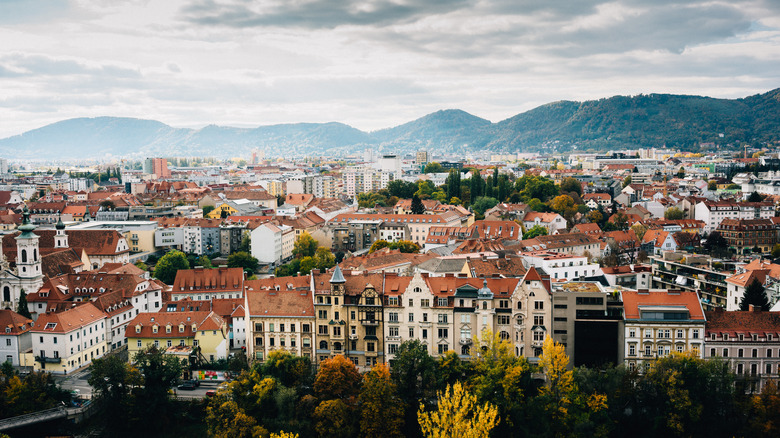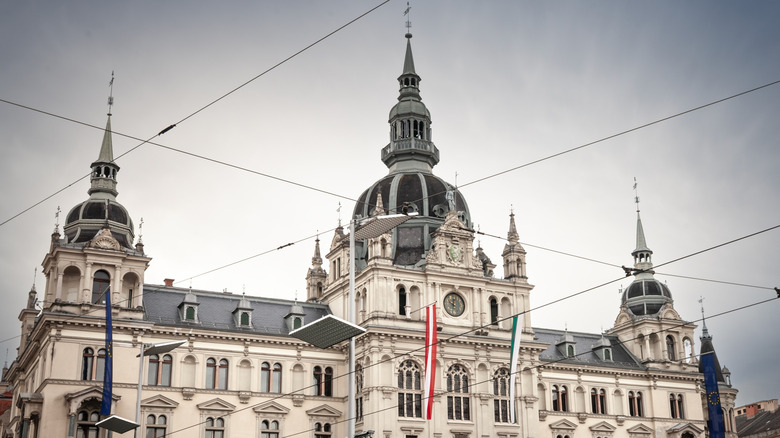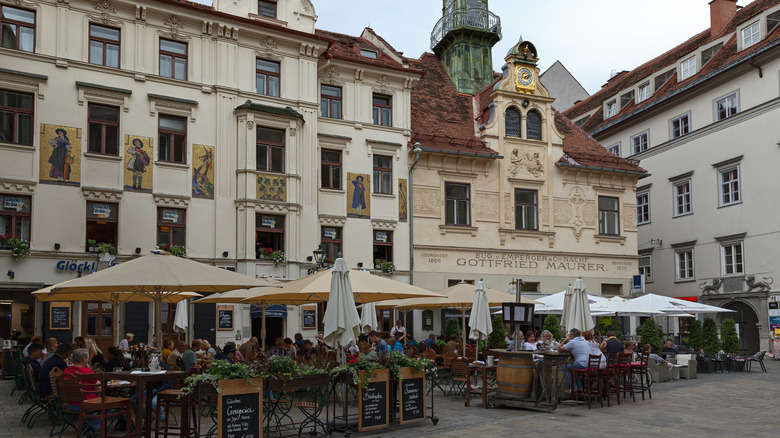Avoid Vienna's Tourist Crowds At This Underrated Austrian City Full Of Stunning Sights
Vienna, the magnificent capital of Austria, is undoubtedly a bucket-list destination for visitors to Europe. It's an eye-catching UNESCO World Heritage Site draped in Baroque architecture and marvelous historic monuments, as well as being a must-visit destination for classical music lovers. However, despite its iconic sights, many travelers find that Vienna lacks heart. It's spectacular, of course, but its grandeur can be cold, and its remarkable attractions hold you at arm's length. It's also, as one of the world's most famous city destinations, crowded, particularly during summer.
Smart travelers to Austria know that you don't have to spend all your time in the capital to get a taste of the country's wonderful Middle European glory and rich history. There's loads to see outside Vienna that delivers similar experiences, from the charming, iconic musical heritage of Salzburg, the birthplace of Mozart, to the Renaissance wonder of Schloss Ambras in Innsbruck. One place that definitely deserves more attention is Austria's second-largest city, Graz. Despite being a gorgeous, green city full of stunning Renaissance palaces and a young, edgy, artsy vibe, it's surprisingly underrated and a great way to avoid Vienna's tourist crowds.
Part of the reason for Graz's relative anonymity is its lack of direct flight connections from North America. The city is in Styria, in the southeast corner of Austria, and most visitors arrive at Graz International Airport, conveniently located just outside the city and reachable in 20 minutes by metro or taxi, which is served by routes across Europe. Transatlantic tourists have to layover in another European hub, or fly to Vienna and take a train or bus, both of which take around two-and-a-half hours.
Stunning baroque architecture and cutting-edge contemporary art
If you are looking to get a similar fix of Baroque architecture and Renaissance splendor as you would in Vienna, then Graz's elegant Schloss Eggenberg is a fantastic place to start. This exceptional palace was built in 1625 by Giovanni Pietro de Pomis. and boasts a series of beautiful painted frescoes, picturesque Baroque architecture, courtyard arcades, and fabulous Renaissance design, all themed around astrology, astronomy, and classical mythology. Tickets include a guided tour, as well as entry to the rest of the Schloss Eggenberg Museums for 24 hours, giving visitors the chance to explore the excellent art and archaeology collections.
The Uhrturm on the Schlossberg is Graz's most recognizable landmark and well worth visiting. Built on the foundations of the original fortification that predated the founding of Graz, this charming clock tower on top of a lush, forested hill towers more than 1,500 feet over the city. The views are stunning, as is the journey to get there, either following trails up through the woods or via the Schlossbergbahn funicular, a railway that rises at a sharp gradient of 60%!
Art lovers will find plenty to enjoy in Graz. The Neue Galerie, part of the Joanneumsviertel complex, is one of the largest and most important art museums in the country. It's a fantastic collection of modern art dating from the 19th century, with Styrian artists from the 20th century like Günter Brus particularly well represented. The Kunsthaus brings the wow-factor, both inside and out, with an ever-changing collection of world-class contemporary art, and its 'friendly alien' photovoltaic-skinned design courtesy of British architects Peter Cook and Colin Fournier.
The culinary capital of Austria
While lack of crowds is definitely one of the main advantages Graz has over Vienna, the atmosphere of the city is also a huge plus. Vienna is an elegant city with something for every traveler, but it can be stand-offish and grand. Graz, on the other hand, is laid-back and welcoming, a city filled with abundant green space and a youthful, edgy atmosphere. There's plenty of interesting, modern architecture that contrasts beautifully with the more mannered historic buildings, and the nightlife and food scene is lively and exciting.
Graz is known as the culinary capital of Austria, and leans into the farm-to-table, produce-led roots of the Styrian region. Regional delicacies include apples, Vulcano Ham, and pumpkin seed oil, as well as fantastic wines. You can get a wonderful experience of the best of this cuisine at Der Steierer, which serves amazing and inventive Styrian tapas, or for a more traditional, rustic experience, head to Cafe Glockenspiel. Wine-lovers will want to explore the wonders of the South Styrian Wine Road, which can be done at traditional wine taverns known as buschenshanks, including Hildenbrand 1888 and Konrad Pölzer.
Graz boasts a vibrant after-hours scene, thanks to its array of excellent pubs, cocktail bars, and clubs around Prokopigasse, Bürgergasse, Mehlplatz, and Glockenspielplatz, as well as its large student community. The Ernst Fuchs Bar is a Graz icon, all dark interiors and innovative cocktails, while Glöckl Bräu is a traditional Austrian tavern that brews its own beer. If you are looking for something livelier, Post Garage boasts two floors and three dancefloors and guarantees a good time all night long.


